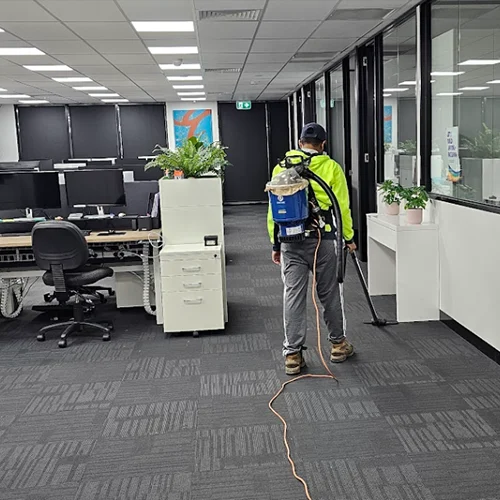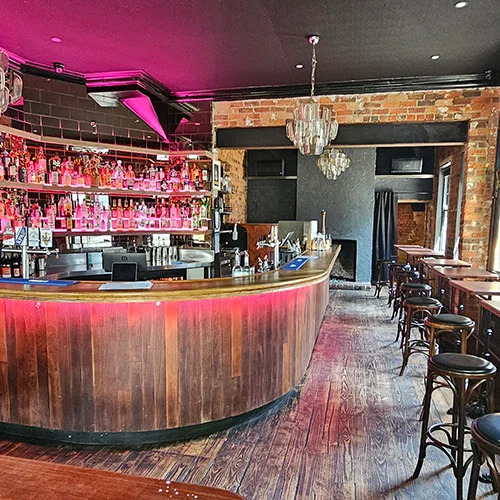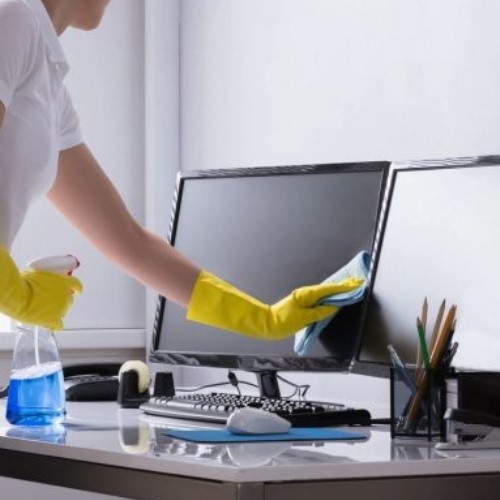Introduction:
Professional Cleaning Services
Pin pointing an exact date for when restaurant cleaning became a “must” is difficult. It likely wasn’t a single moment of realization, but rather a gradual understanding through observation and experience. Here’s a breakdown of some factors that likely contributed to the importance of restaurant cleaning:
- Early Concerns: Even in ancient times, there was probably some level of cleaning done in food establishments. Spoilage and unpleasant odors would have been a natural incentive to maintain some level of hygiene.
- Rise of Sanitation Knowledge: As scientific understanding of hygiene and disease transmission grew (especially from the 19th century onwards), the connection between uncleanliness and food-borne illness became clearer.
- Public Health Regulations: With a growing understanding of sanitation, governments started implementing public health regulations in the late 19th and early 20th centuries. These regulations likely mandated minimum cleaning standards for restaurants.
Here are some resources you might find interesting for further exploration:
- History of Food Safety: This could be a broad search term, but it might lead you to articles or websites that discuss the evolution of food safety practices, including cleaning in restaurants.
- Public Health Regulations Timeline: Searching for the history of public health regulations in your specific region might reveal when restaurant cleaning became a legal requirement.
Running a comes with a myriad of responsibilities, and one crucial aspect often overlooked is the cleanliness of the establishment. Maintaining a clean and hygienic environment is essential for the success of any restaurant. In this article, we will delve into the key signs that indicate your restaurant requires the services of professional cleaners to ensure a spotless and inviting space for your customers.
key signs
- 1. Lingering Odors: If customers or staff members frequently complain about unpleasant odors in the restaurant, it may be a sign that deep cleaning is needed. Lingering smells can be caused by accumulated grease in kitchen vents, dirty carpets, or mold in hidden corners. Professional cleaning services can help eliminate these odors and improve the overall ambiance of the restaurant.
- 2. Visible Stains and Grime Stains on floors, walls, tables, or chairs can tarnish the image of your restaurant and deter customers. Additionally, built-up grime in kitchen equipment or restroom facilities can pose health risks. Professional cleaners have the expertise and tools to effectively remove stubborn stains and grime, ensuring a pristine and sanitary environment.
- 3. Pest Infestations: The presence of pests such as rodents, cockroaches, or flies in your restaurant is a clear indicator that cleanliness standards are not being met. These pests not only pose health hazards but can also damage your reputation. Professional cleaning services can conduct thorough pest control measures and implement preventive strategies to keep your restaurant pest-free.
- 4. Decreased Customer Satisfaction:
Customer satisfaction is crucial for a business’s success for several reasons:
-
- Customer Retention: Happy customers are more likely to return for future purchases. Studies show it costs five to seven times more to acquire a new customer than to retain an existing one. By focusing on satisfaction, you can build customer loyalty and keep them coming back.
- Positive Word-of-Mouth: Satisfied customers are more likely to recommend your business to others through positive word-of-mouth. This free marketing can be incredibly powerful in today’s digital age. Online reviews and social media recommendations can significantly influence buying decisions.
- Reduced Customer Churn: Dissatisfied customers are more likely to take their business elsewhere. By addressing their concerns and ensuring a positive experience, you can minimize customer churn and maintain a steady revenue stream.
- Improved Brand Reputation: A focus on customer satisfaction fosters a positive brand reputation. People associate a brand with the way it treats its customers. When customers feel valued and respected, it builds trust and loyalty.
- Valuable Customer Feedback: Happy customers are more likely to provide constructive feedback. This feedback can be invaluable in identifying areas for improvement in your products, services, or customer service processes.
- Competitive Advantage: In a competitive marketplace, prioritizing customer satisfaction can give you a significant edge. By consistently exceeding customer expectations, you can stand out from the crowd and attract more business.
- Employee Morale: When a company prioritizes customer satisfaction, it often leads to a more positive work environment for employees. Employees feel good about working for a company that values its customers and strives to provide a great experience.
If you notice a decline in customer satisfaction or an increase in negative reviews regarding the cleanliness of your restaurant, it’s time to consider professional cleaning services. A clean and well-maintained establishment not only attracts customers but also enhances their overall dining experience. Investing in professional cleaning can lead to higher customer retention and positive word-of-mouth.
In conclusion, maintaining customer satisfaction is a win-win situation. It benefits both the business and the customer, leading to long-term success and growth.
“A clean restaurant is a reflection of your commitment to quality and customer satisfaction.”
The statement “A clean restaurant is a reflection of your commitment to quality and customer satisfaction” is very important for several reasons:
- Customer Perception: People subconsciously associate cleanliness with quality. A clean restaurant creates a positive first impression and assures customers that food safety and hygiene are taken seriously. This builds trust and confidence in the quality of the food and the overall dining experience.
- Attention to Detail: A clean restaurant reflects a commitment to attention to detail. If a customer sees a clean dining area and restrooms, they’re more likely to believe that the same level of care goes into food preparation and service. This creates a sense of professionalism and reinforces the idea that the restaurant takes pride in its offerings.
- Customer Satisfaction: Cleanliness is a fundamental aspect of customer satisfaction in a restaurant setting. Nobody wants to eat in a dirty or unsanitary environment. Maintaining a clean space shows customers that you care about their comfort and well-being, contributing to a positive dining experience.
- Employee Morale: Working in a clean and organized environment can boost employee morale. Employees take pride in a clean workspace and are more likely to maintain high standards of service when cleanliness is a priority.
- Brand Image: A clean restaurant reflects positively on the overall brand image. It conveys a sense of professionalism and quality that can attract new customers and build customer loyalty. In today’s digital age, online reviews and social media can be significantly impacted by cleanliness.
- Meeting Expectations: Customers have a basic expectation that a restaurant will be clean. Meeting this expectation is essential to avoid disappointment and negative customer experiences.
In essence, a clean restaurant goes beyond aesthetics. It’s a tangible expression of a commitment to quality, customer satisfaction, and overall excellence in the dining experience.
Conclusion:
Maintaining a clean and hygienic restaurant is essential for the success and reputation of your business. By recognizing the signs that indicate the need for professional cleaning services, you can ensure a welcoming environment for your customers and staff. Addressing cleanliness issues promptly with the help of experts will not only enhance the overall dining experience but also contribute to the long-term success of your restaurant.
Remember, cleanliness is not just a choice but a necessity in the hospitality industry.
The cost of maintaining a clean restaurant versus a non-maintained one can be broken down into two main categories: direct costs and indirect costs.
Direct Costs:
- Cleaning Supplies: This includes disinfectants, soaps, sponges, cloths, mops, trash bags, and other cleaning equipment. A clean restaurant will require regular restocking of these supplies, while a neglected restaurant will likely have minimal or no cleaning supplies.
- Cleaning Staff: Labor costs associated with employing cleaners or janitorial services will be significantly higher in a clean restaurant. A non-maintained restaurant might rely solely on minimal cleaning done by existing staff during downtime.
- Waste Disposal: Regular trash collection and disposal fees will be higher for a clean restaurant that generates more waste from regular cleaning.
- Preventative Maintenance: Maintaining equipment, fixtures, and surfaces to prevent future problems (e.g., deep cleaning of grease traps, vent hood cleaning) is crucial for a clean restaurant. A neglected restaurant might neglect these services, leading to potential repairs down the line.
Indirect Costs:
- Lost Sales & Revenue: An unclean restaurant can lead to customer dissatisfaction, negative reviews, and ultimately, lost sales and revenue. The cost of acquiring new customers is significantly higher than retaining existing ones.
- Health Department Fines: Regular health inspections are a reality for restaurants. A non-maintained restaurant is more likely to receive violations and fines due to poor hygiene practices.
- Increased Food Spoilage: Proper cleaning helps control pests and bacteria that can contaminate food. A dirty environment can lead to increased food spoilage, impacting inventory costs.
- Employee Morale & Productivity: Working in a clean environment is more pleasant for employees, leading to increased morale and potentially higher productivity. Conversely, a dirty environment can create a demotivating atmosphere.
- Equipment Damage: Neglecting cleaning can lead to premature wear and tear on equipment, increasing repair and replacement costs.
While the upfront costs of cleaning supplies and staff might seem higher for a clean restaurant, the indirect costs associated with a non-maintained restaurant can be much more significant in the long run. Lost revenue, fines, and increased waste can quickly outweigh the cost of maintaining a clean and hygienic environment.
Here’s a quick summary:
- Clean Restaurant: Higher direct costs (cleaning supplies, staff), lower indirect costs (lost sales, health fines, spoilage)
- Non-Maintained Restaurant: Lower direct costs, much higher indirect costs
A clean restaurant is an investment that pays off in the long run. It fosters customer satisfaction, protects your brand image, and ultimately contributes to a successful and profitable business.
Sources:
* National Restaurant Association: https://restaurant.org/Home








